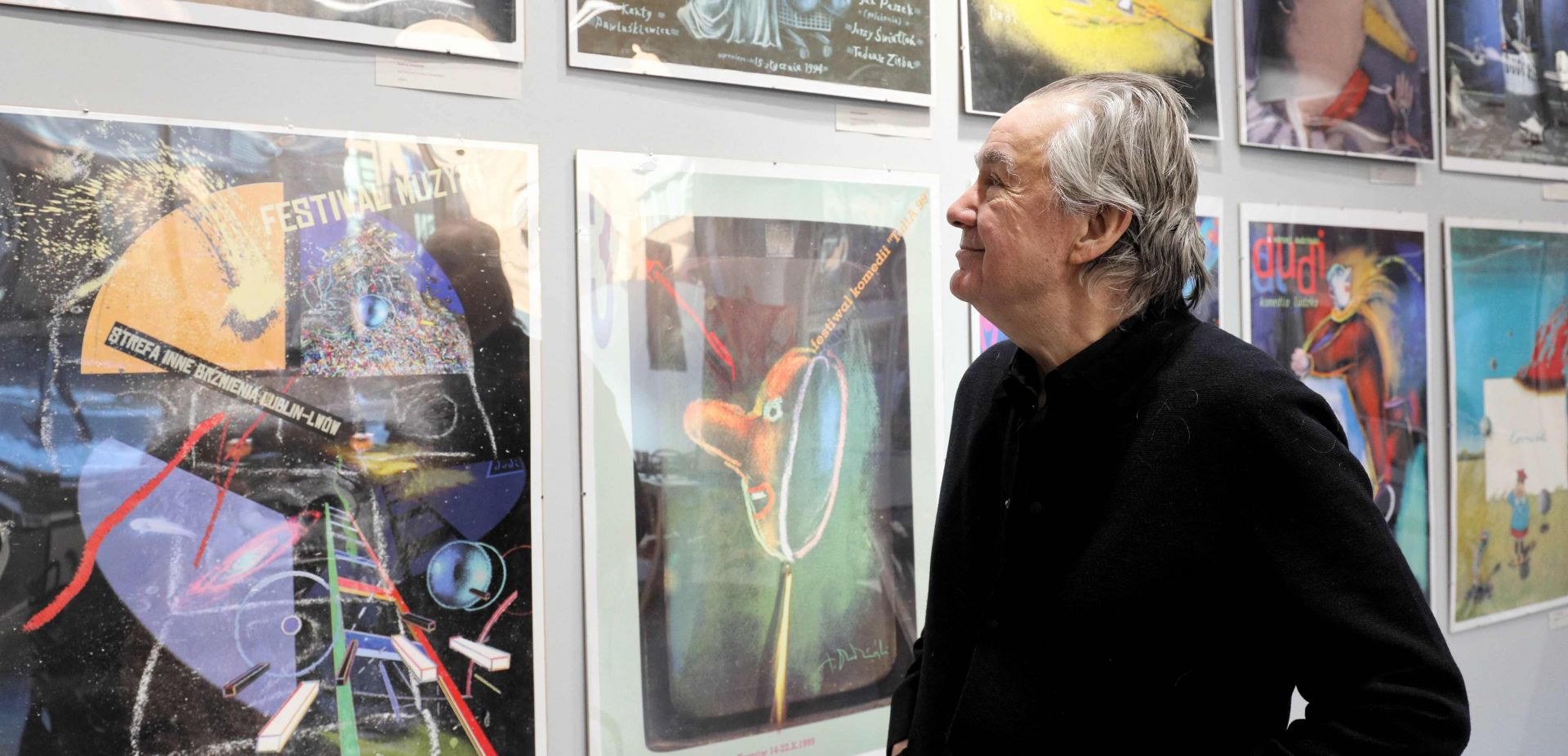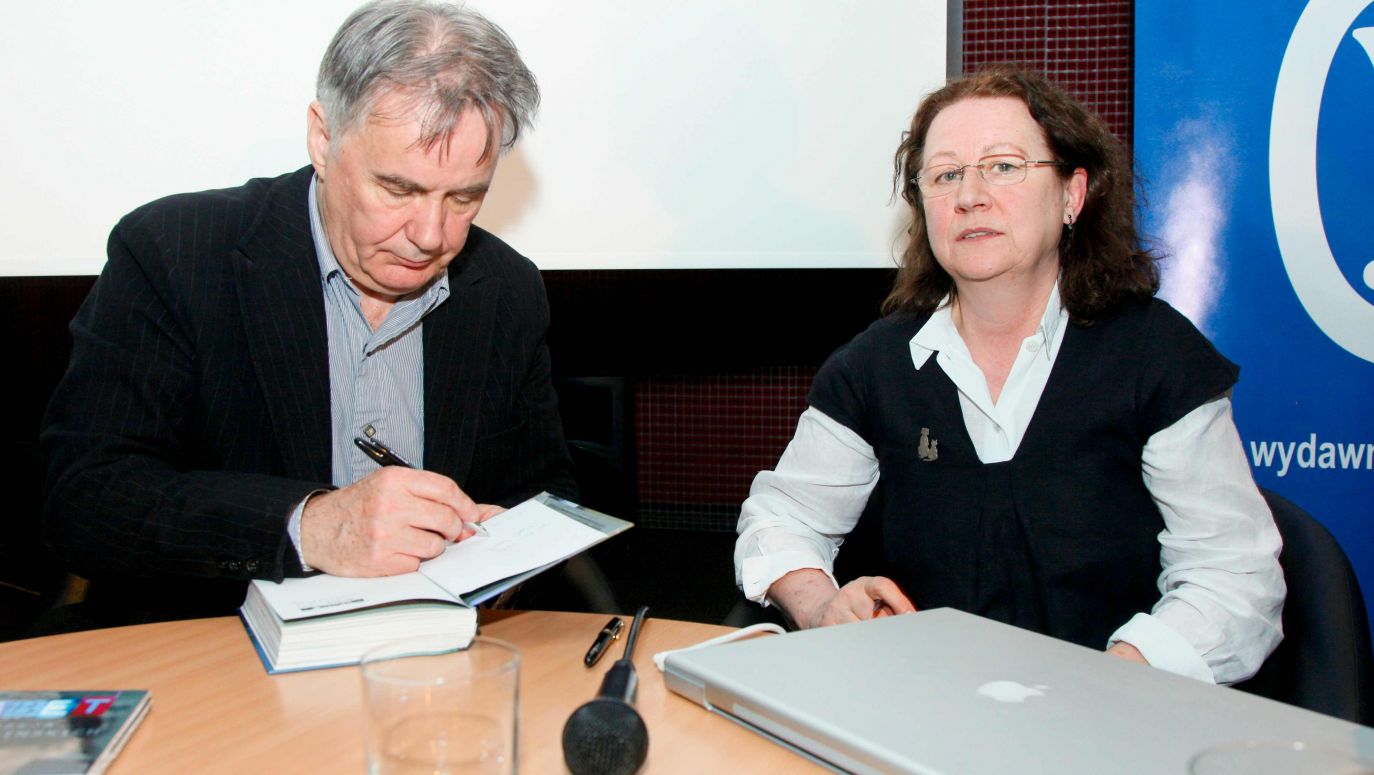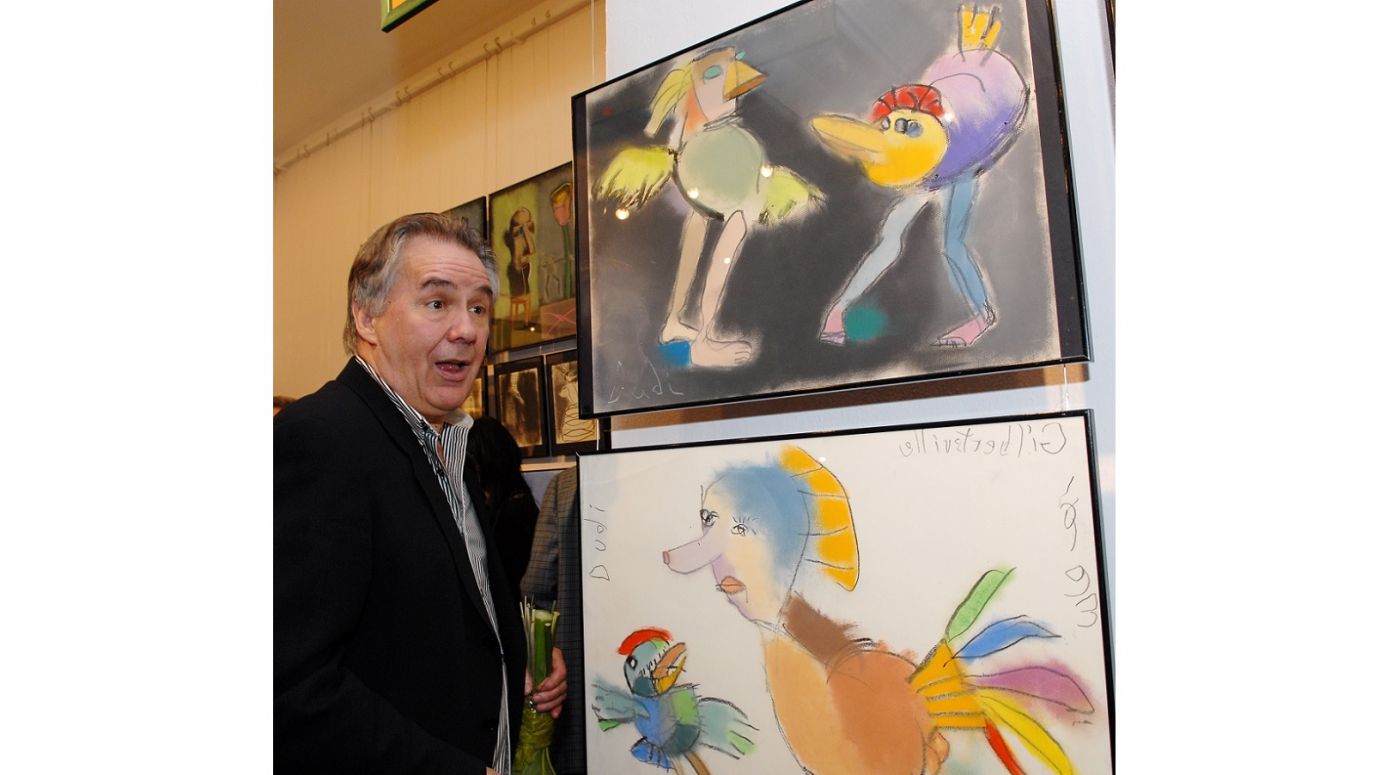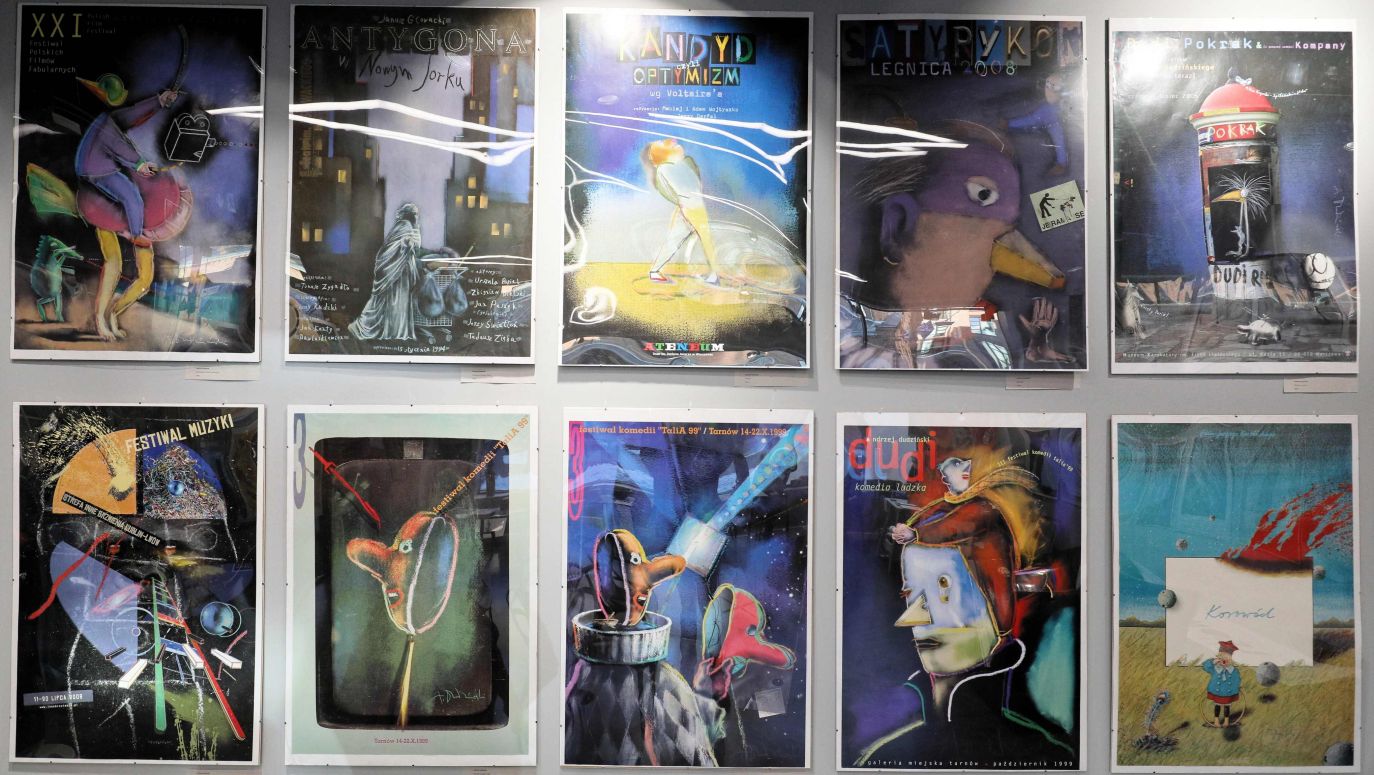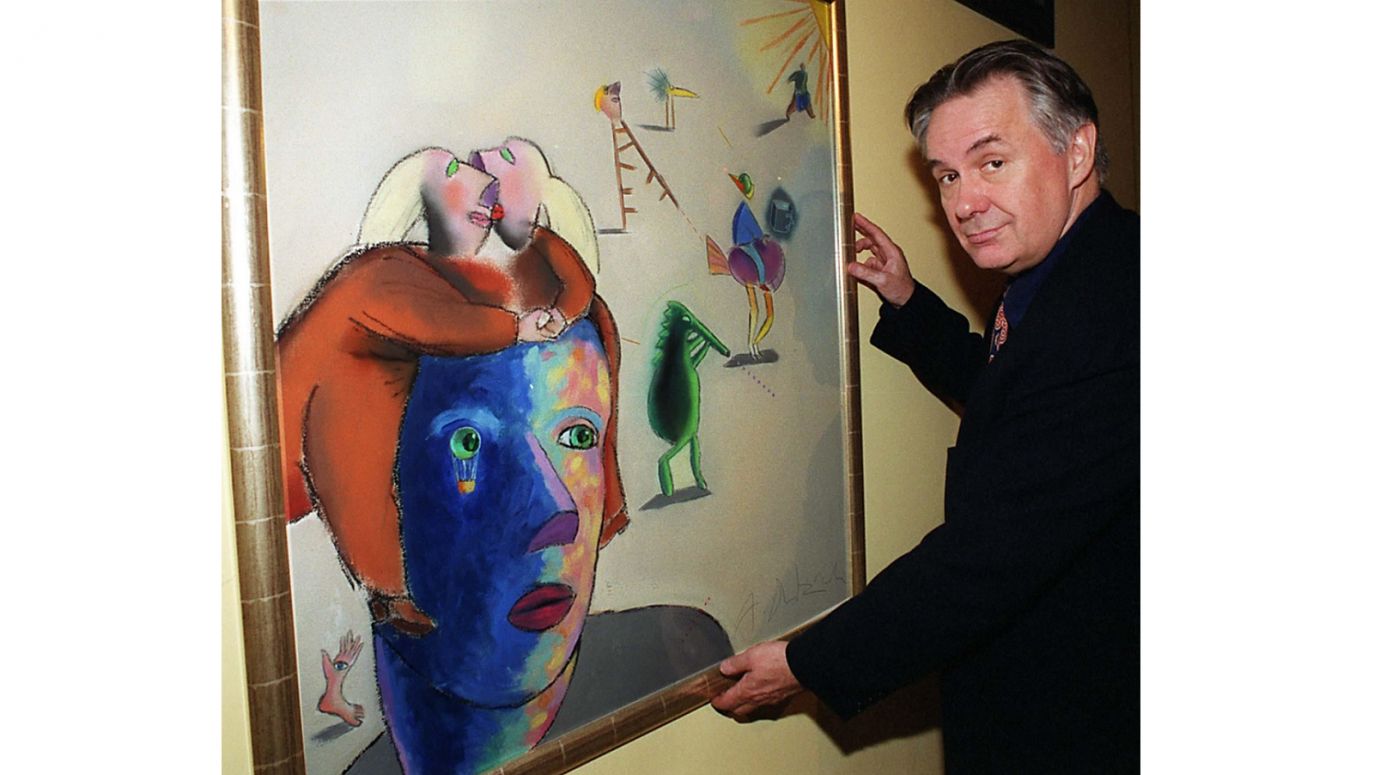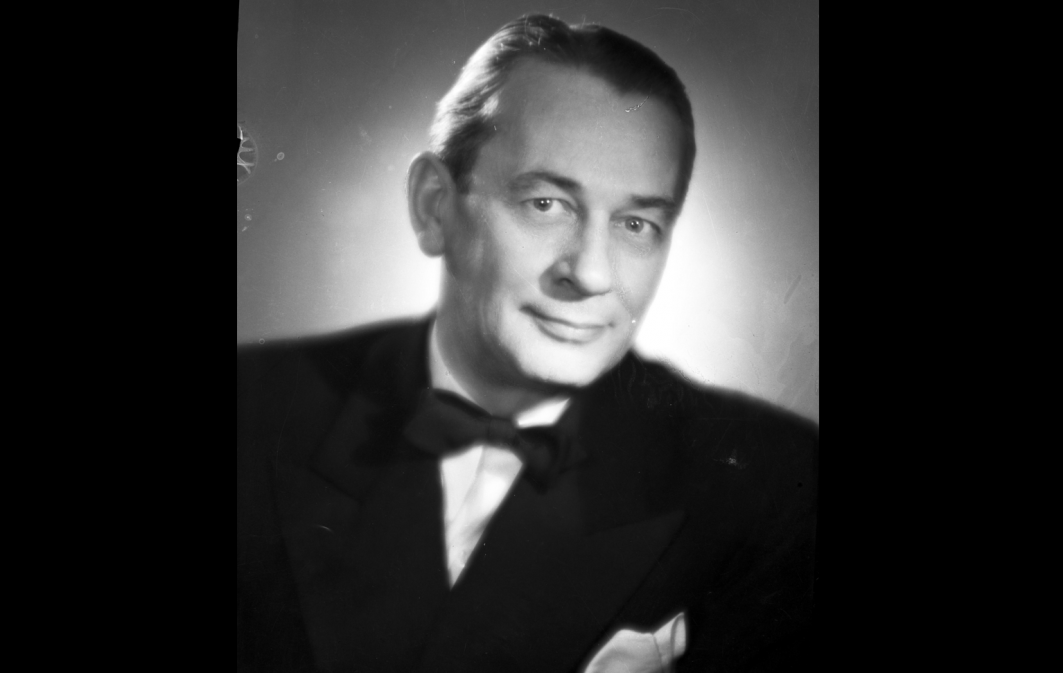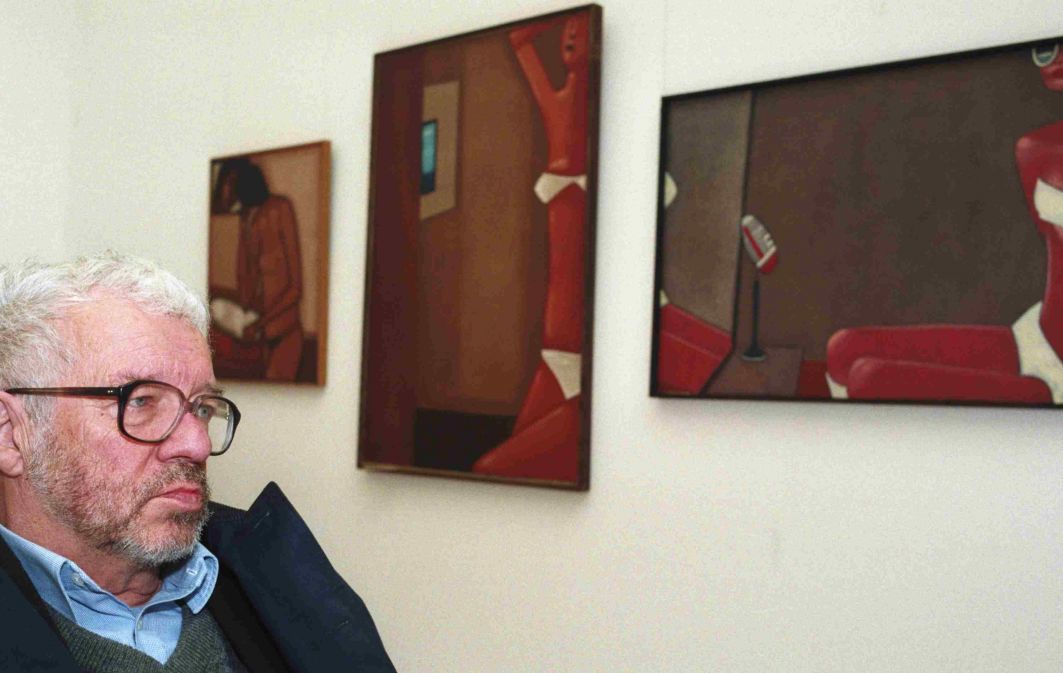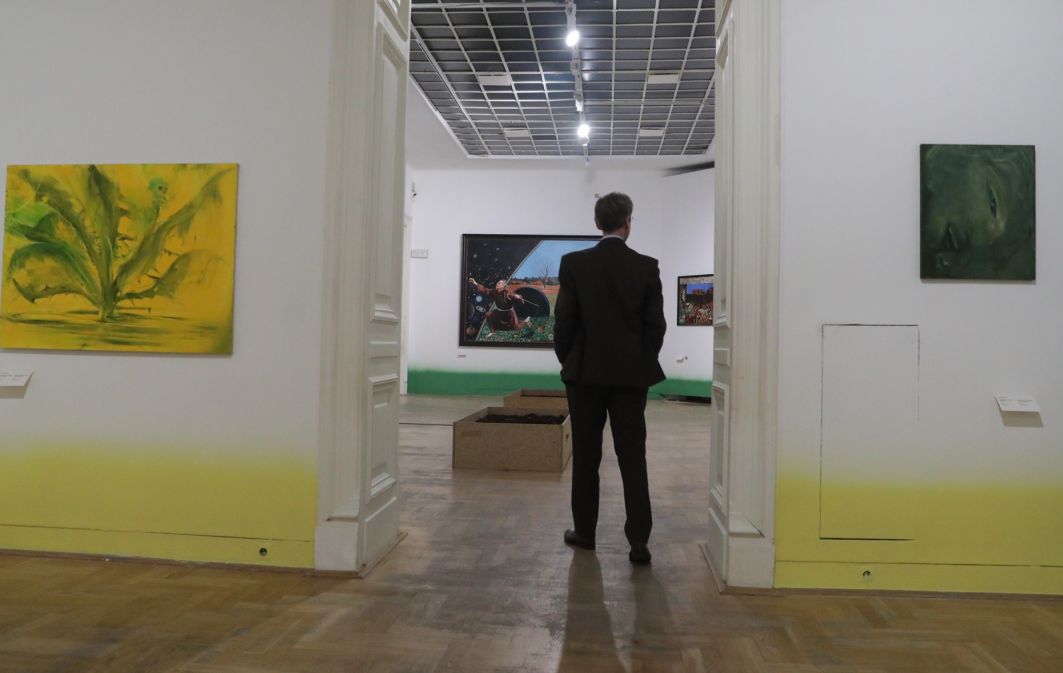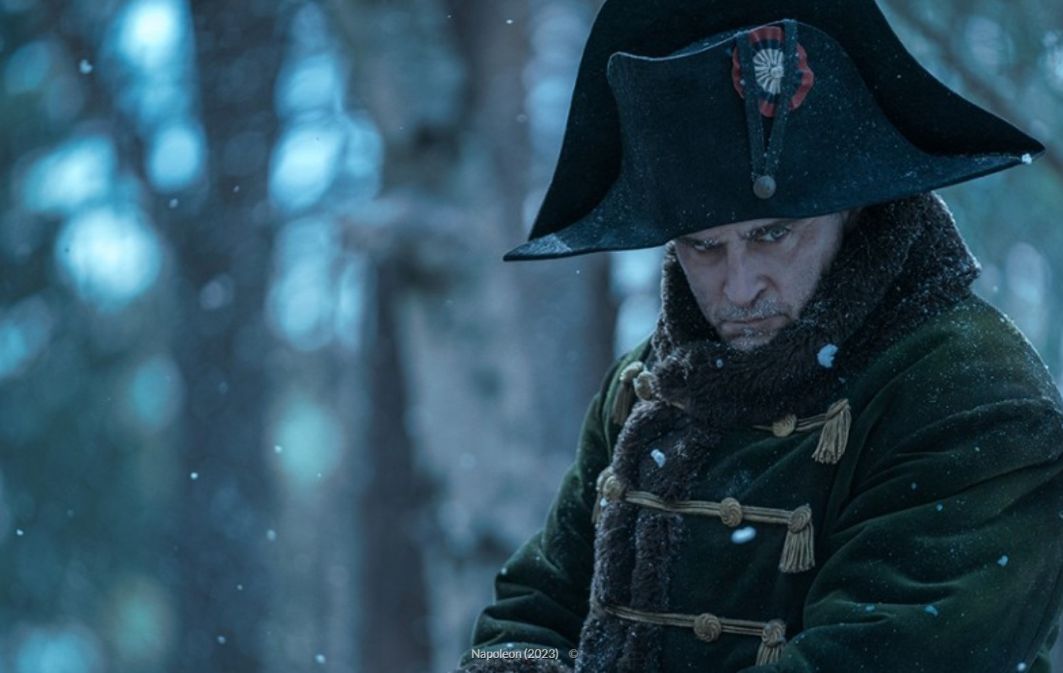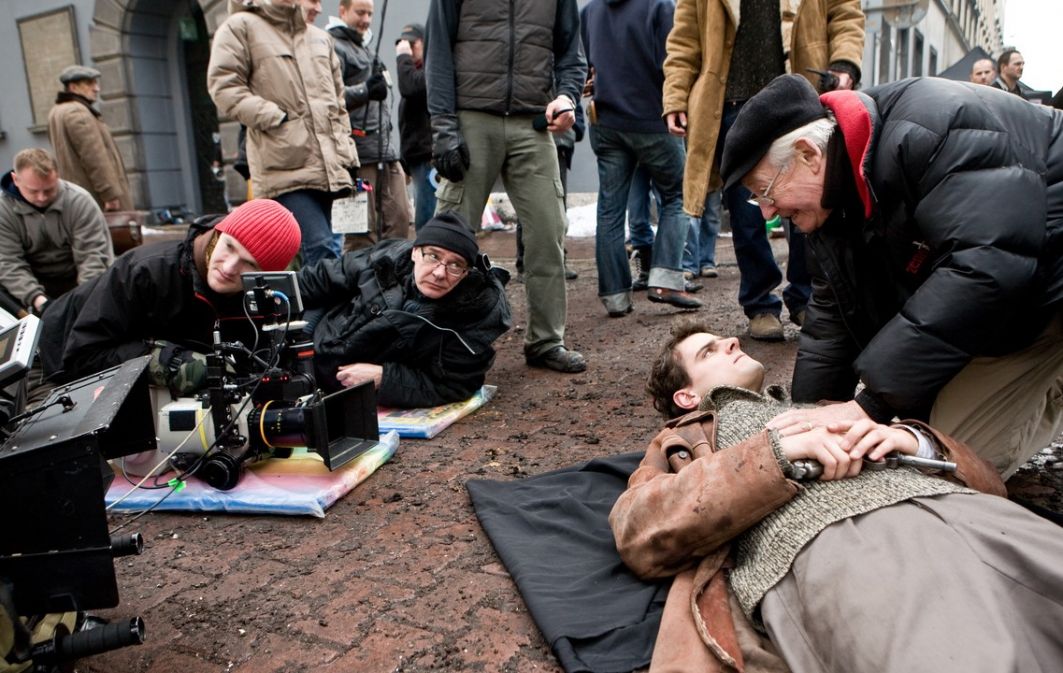The Bird Who Spoke
25.01.2023
– I don’t form a single whole for people – Andrzej once told me. – The audience puts me in two different spheres: applied art and so-called pure art. Some encounter my illustrations; others perceive me as an independent artist, painter, photographer, and creator of showcase collages. Maybe I should part ways with drawing and limit myself to paintings. But it’s mentally impossible for me. Every undertaking, even the most attractive, but performed constantly, turns into torment. Monotony kills.
Andrzej Dudziński (1945 – 2023)
He was 77 years old – and as you know, this is the age when they say it’s all downhill from there. Because two sevens are two axes. Superstitions sometimes come true – the blades of the double seven-axe cut down Andrzej Dudziński on January 17.
But he certainly wouldn’t have wanted to hit a tearful note on this occasion. It’s better to be comforted and gladdened by remembering his wonderful life, rich in experiences, full of fascinating friendships, and above all, fulfilled love for a woman. The same one.
Perhaps it’s precisely the relationship with Magda Dygat, the daughter of a popular writer, later herself a writer, that should be considered Andrzej’s greatest life success (according to Czesław Niemen’s hit declaration “My love, my success, is you”)?
He and Magda met in Sopot as teenagers in 1960.
How did she see him then? “He was a carbon copy of an American teenager. He had a crew cut, wore jeans, an oversized red sweater, and moccasins. In addition, he could casually toss around American words, which made him incredibly cool for a fifteen-year-old – she would recall. Magda and Andrzej passed the test of time, from that holiday crush to seriously dating each other; they moved in together in 1965 and married two years later. And although they changed addresses dozens of times, nothing went wrong between them. Hardly no one maintains unchanging feelings for more than six decades!
Please note the magical meaning of sevens in the common biography of the Dudzińskis (as Magda mentions in The Little Alphabet of Magda and Andrzej Dudziński): the wedding in 1967, the trip to the US in 1977, buying a house near New York in 1987. The year 2007 had positives and negatives, but it stands out. Magda did not predict this year’s double axes.
With a Dog and a Man
Yes, Andrzej Dudziński lived at full throttle. He jumped from one discipline to the next, since working the same field for too long was exhausting – and his greatest fear was getting bored of himself. So he somersaulted. And although he sometimes performed risky acrobatics, he never broke his neck. Even when he drew with his left hand, without being left-handed. This is not a metaphor, but a fact: when his right hand became a bit too nimble, he deliberately made his work more difficult by activating the other limb. Was it luck or above-average dexterity? Probably both.
It was similar when it came to establishing interpersonal contacts – it was effortless for him and most often resulted in the development of long-term friendships. I never met anyone who was hostile towards Dudi, though he wasn’t cuddly at all. Sometimes, he revealed his unpopular and defiant views, which in someone else’s case would probably lead to conflicts. Andrzej endeared himself to everyone with his charm and boyish smile. It was obvious that he wasn’t faking it. Not in anything.
The Dudziński’s homes were always full of regulars and casual visitors, whether in Warsaw or New York. And if we listed the most famous ones, who they could add to their list of friends and tell stories about them, it would be appropriate to quote the introduction to the book The Little Alphabet of Magda and Andrzej Dudziński, in which they revealed the backstory of a certain binding decision: “After long and stormy deliberations, we decided that it was safest to write about animals, plants and places, and about friends only when necessary, that is when an opportunity arises where we can be funny at their expense.
And the dog? A female. Let’s not forget about the symbiotic relationships with several other four-legged household members, which the mobile lifestyle of the Dudzińskis didn’t rule out.
One of Andrzej’s last projects was an animated (digital) film with the working title “A Crazy Piece of Something” – Dudi’s story told from a dog’s point of view. And I’m not surprised, because a dog has always complemented the image of the Dudzińskis anywhere in the world. One of these first “travelers” received rounds of applause in Central Park for her circus ability to jump into the basket hanging on the handlebars of Andrzej’s bicycle. Then she rode, head cocked proudly, mane billowing like her master’s. I especially like this image of Andrzej – with a dog-like hairstyle and a dog next to him. The bird has flown into the sunset.
All of Dudi’s Buddies
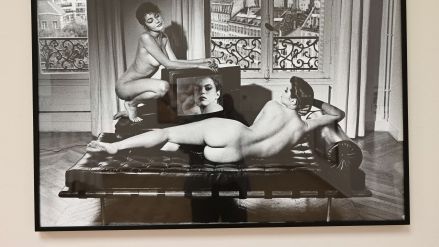
His photos began to be seen as 'sexist'.
see more
We must start with him. Not so long ago, in 2020, he celebrated half a century of creative work. Of course, in his hometown of Sopot, with an exhibition at the State Gallery of Art. He had been preparing for the jubilee for... a decade. Already in 2012, he announced that he would head out into Poland with various shows, then he would move abroad and thus he would spend another forty years. It turned out to be a little less, but it was richly spent, without a moment’s break.
In fact, Dudziński didn’t pause since his debut in 1970. It was then that a student of the Warsaw Academy of Fine Arts (earlier studying architecture at the Gdańsk University of Technology, then transferring to the local Academy of Fine Arts, and then moving to the capital) began to poke “pins” into the socialist reality. And it should be added that Szpilki (Pins), a satirical weekly, was then a springboard into public awareness, mainly in the artistic and intelligentsia community. It was there that Dudziński made his debut (in fact, his first publications were in the Polska monthly, but after a few months the wordless humor there bored him). And he joined an exclusive group of young talented cartoonists.
This was due to Dudi’s bird, which Jan Kott described as follows: “on long spider legs, with a large beak and piercing eyes”. It should be added that Dudi’s bird (and the personage of its creator) was further defined by its unusual silhouette and poses. They were both inventive, elegant and a bit vain. Is it any wonder that the creator of the funny bird identified himself with his creation to the extent that he took on the nickname “Dudi” and stuck with it till the end?
As for the birth of Dudi’s character – paradoxically, the censorship of Communist Poland didn’t hurt him at all, and even seemed to help a little. Because the censor’s net fished out any literalness, it turned out to be a test for... intelligence. Explanations for dummies were gone. Andrzej successfully passed the high IQ exam. Pins elevated Dudi to a satirical Parnassus. Well, not right away, but in 1972, Krzysztof Teodor Teoplitz, then editor-in-chief of the weekly, quickly realized that he had a new ace in hand.
The disheveled cephalopod liked it – he was ironic, but also a bit romantic, distracted and lost. As if he was from another culture. At the same time, no one could accuse him of anti-socialist propaganda. And so Dudziński got the chance to deliver absurd, yet scathing texts every week from a stinging satirical pulpit, stuffed with anarchist views, putting the lines into the beak of a funny bird.
Although the disheveled bird played the main role in Dudi’s theater, almost from the beginning there were supporting characters – Mice, or rather rat-like creatures. They appeared to be female, though this isn’t certain. They showed incredible cunning and presence of mind. They were neither extras nor observers of events. They teased, they chimed in, they advised. Like a one or two-person Greek choir, adding to the lines. They found themselves perfectly in every situation, with every partner that the author condemned her (him?) to. No wonder that Mice also appeared in Dudziński’s later paintings, collages and pastels. Just a regular and experienced commentator.
Over the years and course of events, other creatures with an equally characteristic appearance appeared in Andrzej’s drawing repertoire: Pokrak and Hippol. Pokrak (date of birth: the late 1980s) was a yokel with a bumpkin pedigree, resistant to all subtleties. He also professed disbelief in aesthetic values. “Uninvited, he assaulted my imagination”, commented the creator on this gloomy fact. And he continued: “That something which he fermented out of was undoubtedly a concentrated solution of the absurd, seasoned with a gesture of childish contrariness.” Pokrak made his way into the pages of Tygodnik Powszechny (The Common Weekly) in 1992. He let himself be taken out of there six years later, but into the glory of a separate album dedicated to him.
Hipol did not arouse any special emotions. The Mice remained until the end.
Back to school
Dudziński not only changed addresses, but also tools and formats, as well as the area of artistic exploration. From the small “window” of weeklies, he moved on to large-format painting, then to three-dimensional showcases; from a black, slightly wiry line to soft strokes and tachist forms, and finally to ready-mades, not forgetting scenography, photography and animated film…
Finally – it should be clearly stated – Dudziński had writing talent. The short, sometimes rhyming comments in speech bubbles under the drawn scenes are difficult to measure by literary standards, but the The Little Alphabet of Magda and Andrzej Dudziński, written together with his wife (WL 2009), definitely can be. In a word, he did not fear any creative field, each new one was a challenge. However, this “impermanence” had a weak side.
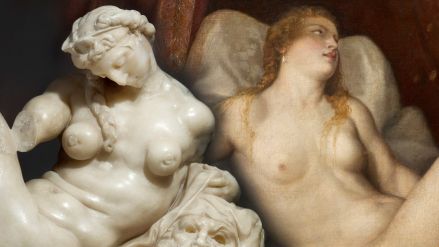
The age-old rivalry in the arts creates excitement and yields good returns.
see more
– I don’t form a single whole for people – Andrzej once told me. – The audience puts me in two different spheres: applied art and so-called pure art. Some encounter my illustrations; others perceive me as an independent artist, painter, photographer, and creator of showcase collages. When I left for the States, I cut myself off from Dudi, from drawn jokes. In the US, I took up serious illustration, though not devoid of humor or irony. Maybe now I should part ways with drawing and limit myself to paintings. But it's mentally impossible for me. Every undertaking, even the most attractive, but performed constantly, turns into torment. Monotony kills. I can’t afford it – because I’m alive.
More than a decade ago, he went back… to school. We’re talking about a disused school building in a town outside New York City, where he got an entire floor to use. “If it weren’t for this school, I probably wouldn’t have started painting,” he admitted. – The second brilliant place is the room above the exhibition halls at the castle in Reszel. Some artist-friendly spirit lurks there, conjuring up an extremely creative aura. I remember that before the exhibition in Reszel, I had such creative powers that I could hardly slow down production.
Well, and what place on earth is the most suitable for the Dudzińskis to live in? – I consider New York to be the most inspiring place in the world, although at the same time the hyperactivity is tiring – assured the artist. – Warsaw is more convenient, at least from my point of view: I walk everywhere. Additionally, the dog has room to run around in the local parks and green areas. If I had to choose a city today, I would also consider London, my first fascination that hasn’t lost its attractiveness.
Living out of suitcases
I saw him for the first time in the late 1990s at the Graphics and Poster Gallery, where he had an exhibition. Like for others, he captivated me with his directness. Zero stardom. A buddy from the get-go. Sure, this was a certain skill developed as a result of life challenges, but also a trait taken from where and when he was born.
He considered himself a child of war and was burdened with its memory – because although in 1945 the hostilities had ceased, the fear of a return to conflict, poverty, hunger and terror lasted for a long time, fueled by communist propaganda. Under [Edward] Gierek [Poland’s communist leader 1970-1980], it got better, but only for a short time. Martial law (1981-1983) evoked the nightmares of Stalinism and the fear of international conflict.
At that time, the Dudzińskis were on safe territory in the United States, but they followed events in the country. It was then that Andrzej began to comment on what was happening in his homeland, impersonating a certain Jan Kowalski [Joe Smith]. It was probably the most journalistic series in his output. Kowalski died on the day Leonid Brezhnev died in 1982. And Dudziński found other reasons for his artistic existence… And after the transformation in 1989, he personally appeared in Poland, and not only because of various alter egos.
Here’s my memory. Before I met Andrzej Dudziński physically and personally, I had contacts with his alter ego in an intangible form, though visually present in the reality of Communist Poland. Of course, we’re talking about Poland’s most famous talking bird. He wasn’t so much talking as being a wise guy. He mocked and praised his tail, or rather his crest feathers, and his laid-back style. He didn’t only seduce me – everyone, like Dudi, wanted to shrug off the burdens, lead an independent and varied life. And… not cut their hair. At the time when the Dudi bird hatched out of Andrzej’s head, the author dressed similarly, from a careless hairstyle to skinny jeans.
Let's recall those times: Dudi made his debut in the Gierek era, when the ethos of Hair, hippies and the West was alive in Poland. He was able to experience firsthand what for most of his generation was a dream. He lived in London for two years (1970-1972), but returned to Warsaw. Then there were several months-long trips to France and the Netherlands, but without emigration consequences. Only an invitation to Aspen, Colorado, for an international gathering of graphic artists made him leave the country for a longer time, of course with Magda. Magda forever. It was 1977. They traveled all over the US, stopped in New York. It seemed to him (them) – New York, was also forever.
However, when they returned for Christmas '89, they changed their minds. Things started to get interesting in Poland. They had an apartment in Mokotów – nothing special, in an apartment building – but there was no problem with stopping there. From then on, “it started to tick”, as Andrzej says. They divided their time between two cities: half of the year in Warsaw, the other half in New York. Being able to compare, Dudi appreciated the Polish public. Despite the fact that he developed a name known in the American press, he published for years in The New York Times, Newsweek and Vanity Fair. But here, he was better understood…
Rebellion against oneself
When the Dudzińskis returned to Poland, the country was undergoing a political and market transformation. And then something happened: Dudi’s satirical drawings began to transform into paintings. Pokrak played a big role here! From a distance, his compositions could seem like abstractions. Some irregular stains, splashes, broken lines. Up close, the viewer’s eye caught the specifics: human-like or Pokrak-like figures, like from past drawings, but without text and context.
These paintings gave the impression of being joyful and spontaneous – at the same time, there was something unsettling about them. Because under the mask of ease and humor some unwanted, unpleasant truth about us, the recipients, was lurking.
But Andrzej Dudziński was not just about the viewers. He wanted to reach his own limits, the recesses of his being. He knew what he could do – but over the years, it no longer got him going. The other side of the coin was much more interesting: what he couldn’t do. So he experimented with his own inability – for example, he took a crayon or a pencil in his left hand to escape from habits. Pokrak was coming out.
Or the passion or artistic concept: collecting the craziest waste. Ugly pine-cone dolls, clothes hangers, peeled off, dirty, twisted adhesive tapes. Out of this NOTHING, Dudziński made assemblages that were locked in display cases, like valuable objects. Then he completed the chaos with a blot of paint, a splash of ink, a crooked pastel line. Improvisation, accident, casual gesture.
